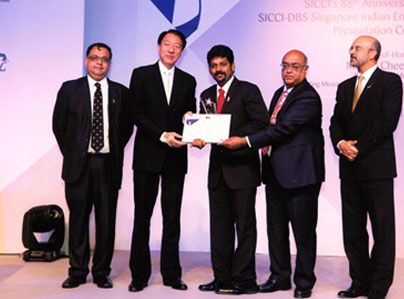Staff engagement
How Collaborative Goal Setting Drives Employee Engagement

Goals are more than a means to quantitatively measure employee performance. The combination of a fixed deadline and clearly defined deliverable is designed as a mechanism to help employees work in a structured and effective manner. Effective goal setting helps to increase employee engagement, improve performance, and benefits the organization as a whole.
Yet, many companies aren’t capitalizing on the most important part of goal setting – working collaboratively to align personal goals to company and team priorities and initiatives.
What Are Collaborative Goals?
Vanderbilt University describes collaborative goal setting as the process of deciding and setting goals together. Unlike the traditional model in which a manager decides the direction of an employee’s work, collaborative goals are agreed through discussing, observing, listening, prioritizing and evaluating targets and objectives together. It’s a transparent process that helps employees feel as though they’re being listened to and included in the company’s broader work.
Although employee engagement is a complex combination of factors, enforcing collaborative goal setting and transparency is a step in the right direction.
Strategies for Creating Collaborative Goals
Setting goals collaboratively can be difficult for some managers. There’s a fine line between hands-on managerial practices and micromanaging. Working collaboratively requires managers to allow employees to take ownership of their goals and for the manager to adopt a more supportive, advisory role.
Here are our top strategies and principles to help managers navigate collaborative goal setting.
Link personal goals to company-wide objectives
Personal goals are only meaningful if they are connected to larger organizational ambitions. 91% of companies that have effective performance management systems say that employees’ goals are tied to the broader business priorities. These companies have understood that collaboration breeds a culture of accountability and trust.
Every employee, at every level, should be able to clearly state how their efforts link into a broader company strategy. For this to work, the company strategy needs to be translated into clear organizational goals written in language that employees can understand.
Your performance management practices need to ensure that these organizational goals are communicated and are available to employees when they are setting their personal objectives. However, avoid downwards goal cascading. This is an administratively heavy exercise that rarely works in practice.
In our performance management software, we use a simple upwards aligning process, that ensures all objectives support the overall goals of the organization in a clear and transparent way. It’s quick and effective.
Keep communication ongoing
Goals need to be clearly articulated and regularly re-visited. Outdated annual performance reviews rely on yearly check-ins to ensure that employees are up-to-date and informed of company strategies and missions. Yet, in most businesses, these objectives and focus points change and transform in the space of a year. As a result over 40% of workers claim that the guidance they receive is too vague. In order for collaborative goals to be meaningful, ongoing and regular communication is key.
The Harvard Business review has recently laid out a number of active and passive techniques companies can use to communicate and embed goals. Included in the active measures are management briefings, company-wide meetings and performance reviews. Passive measures for communicating include corporate social media messaging, intranet communication and recruitment efforts.
Above all, make communication a priority. Set regular one-to-one check-ins throughout the year, so that communication channels are always open and flowing in both directions. Check-ins ensure that objectives and goals are consistently reinforced and articulated so that it is easy to track whether everyone is aligned with the broader picture.
Undertake surveys
Surveys are a great way to assess whether employees are on board with company strategy and how their work impacts the company. Surveys can be undertaken in quarterly, bi-annual, or annual periods and structured to the particular requirements of the organisation.
The Harvard Business Review highlights the annual survey from the North American banking chain, which provides a useful guideline. Questions could include:
Be prepared for goals and directions to change
Business moves quickly. Priorities can change overnight and direction can shift dramatically. Stagnant goals quickly become obsolete. Goals should reflect the dynamic and ever-evolving nature of business. Alongside a flexible attitude, real-time feedback software makes changing goals easy and efficient. With Clear Review, objectives can be added and updated at any point in the year and so reflect the inevitable changes that arise.
Driving organizational health and boosting employee engagement, collaborative goals are at the cornerstone of business success. Book in for a free Clear Review demo and discover how our software can help. If you’d like to know more about performance, engagement, and why we’ve been measuring them in the wrong way, download our new eBook Powering Performance with Engaged People.












